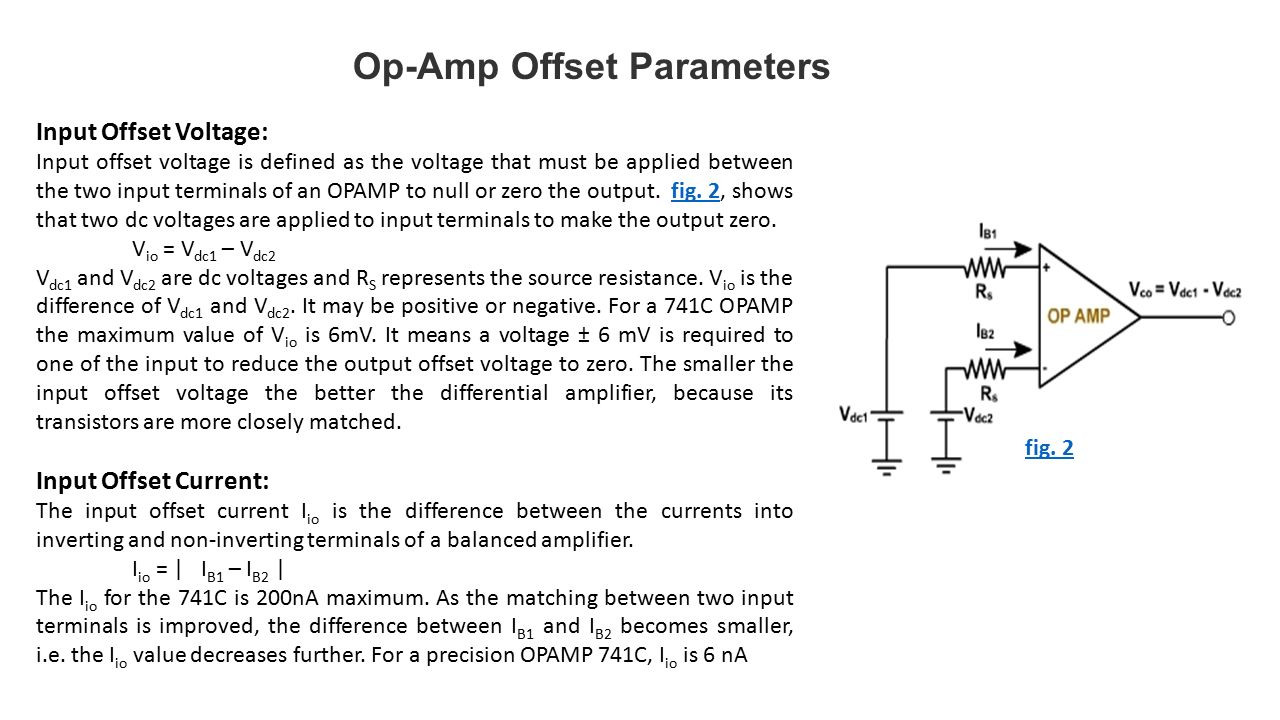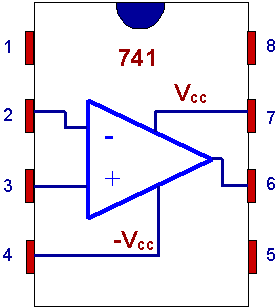
Common mode i/p voltage range mainly includes -ve supply rail and input terminals can swing 0.5V under -ve supply rail.  Double supply ranges from – ☒.5V to ☘V.
Double supply ranges from – ☒.5V to ☘V.  DC i/p voltage ranges from +8V to -0.5V. CMRR (Common Mode Rejection Ratio) is 80dB. Duration of o/p short circuit is Indefinite. The features and specifications of the CA3130 CMOS op-amp include the following. Pin8 (Strobe): It is used to switch off the o/p stage. Pin7 (Vcc+): It is a voltage supply pin where the voltage ranges from 5V – 16V. Pin5 (Offset Null Pin): It is used to fix the offset voltage. Pin3 (Non-inverting Pin IN +): An uneven voltage is given to this IN+ pin. Pin2 (Inverting Pin IN –): A stable voltage is given to this IN-pin. Pin1 (Offset Null Pin): It is used to fix the offset voltage. It is recommended to change R1 for extend offset adjustment ability and R8 for extend the gain range. The OpAmp parameters are also adjustable for special sensing range and output coverage. Do possible adjustment of the mechanical configuration if needed. Note that the adjustment range of offset and scaling is also related to the mechanical magnet Configuration and the magnetic field. Repeat 1 to 4 steps to get both the designed offset the scaled output range. Back to step 2 to readjustment the offset output. Release or return the fixed offset point, back to step 1 readjustment the offset point. Place the magnet to its MIN MAX stroke and tuning PR1 to get designed output range. Tuning PR2 for the designed fixed offset output. Adapt to wide magnet types and field range. When the foot strokes upside, the output goes from 1.1V up to ~5V. When the foot strokes downside, the output goes from 1.1V down to ~0V. The application requires the output to stay at about 1.1V when the actuator is at a balanced point (fixed offset point). Controlling by the foot, the actuator can go two sides of the stroke direction. The actuator is fixed at a mid-point between the two ends of the stroke by a dual-spring system. Also, there is an RC filter at the final output with R3 and C4. U1B is used as the amplitude amplifier stage with adjustable gain tuning by PR1.
DC i/p voltage ranges from +8V to -0.5V. CMRR (Common Mode Rejection Ratio) is 80dB. Duration of o/p short circuit is Indefinite. The features and specifications of the CA3130 CMOS op-amp include the following. Pin8 (Strobe): It is used to switch off the o/p stage. Pin7 (Vcc+): It is a voltage supply pin where the voltage ranges from 5V – 16V. Pin5 (Offset Null Pin): It is used to fix the offset voltage. Pin3 (Non-inverting Pin IN +): An uneven voltage is given to this IN+ pin. Pin2 (Inverting Pin IN –): A stable voltage is given to this IN-pin. Pin1 (Offset Null Pin): It is used to fix the offset voltage. It is recommended to change R1 for extend offset adjustment ability and R8 for extend the gain range. The OpAmp parameters are also adjustable for special sensing range and output coverage. Do possible adjustment of the mechanical configuration if needed. Note that the adjustment range of offset and scaling is also related to the mechanical magnet Configuration and the magnetic field. Repeat 1 to 4 steps to get both the designed offset the scaled output range. Back to step 2 to readjustment the offset output. Release or return the fixed offset point, back to step 1 readjustment the offset point. Place the magnet to its MIN MAX stroke and tuning PR1 to get designed output range. Tuning PR2 for the designed fixed offset output. Adapt to wide magnet types and field range. When the foot strokes upside, the output goes from 1.1V up to ~5V. When the foot strokes downside, the output goes from 1.1V down to ~0V. The application requires the output to stay at about 1.1V when the actuator is at a balanced point (fixed offset point). Controlling by the foot, the actuator can go two sides of the stroke direction. The actuator is fixed at a mid-point between the two ends of the stroke by a dual-spring system. Also, there is an RC filter at the final output with R3 and C4. U1B is used as the amplitude amplifier stage with adjustable gain tuning by PR1. 
When the relative position of the magnet and the Hall sensor is fixed at the designed offset point, the final output voltage can be adjustment by PR2.
OP AMP OFFSET ADJUSTMENT FULL
Actually, any fixed position along the full stroke of the magnet can be set as an offset point mechanically. LMV612 op-amp used for signal conditioning. It deals with the raw Hall sensor output signal with adjustable offset and scaling range.

An Op-Amp stage is introduced in this design. In the non-linear configuration, the output range is limited either from 0.2V to 1V or from 1V to 1.8V. The output of DRV5053 is about 0.2V to 1.8V with the quiescent 1V at zero fields or no perpendicular flux to the sensing surface. The project is useful for applications like Foot Controller, Industrial control stick, Industrial foot pedal, general position or angular sensing. The DRV5053 device is a chopper-stabilized Hall IC that offers a magnetic sensing solution with superior sensitivity stability over temperature and integrated protection features. DRV5053 Sensor is the heart of the project. The sensor provides an approximately linear response, adapt wide magnet types and field range. The Op-Amp circuit helps to achieve the desired output bias and range. Trimmer Potentiometer PR2 provided to adjust the offset and PR1 helps to set the system gain. Two configurations of the magnet and Hall sensors are analyzed. This project includes an analog Hall Effect sensor and an Op-Amp circuit which can be used as position or angular sensing with the benefits of no contact and wearing, high stability and wide sensing range.








 0 kommentar(er)
0 kommentar(er)
